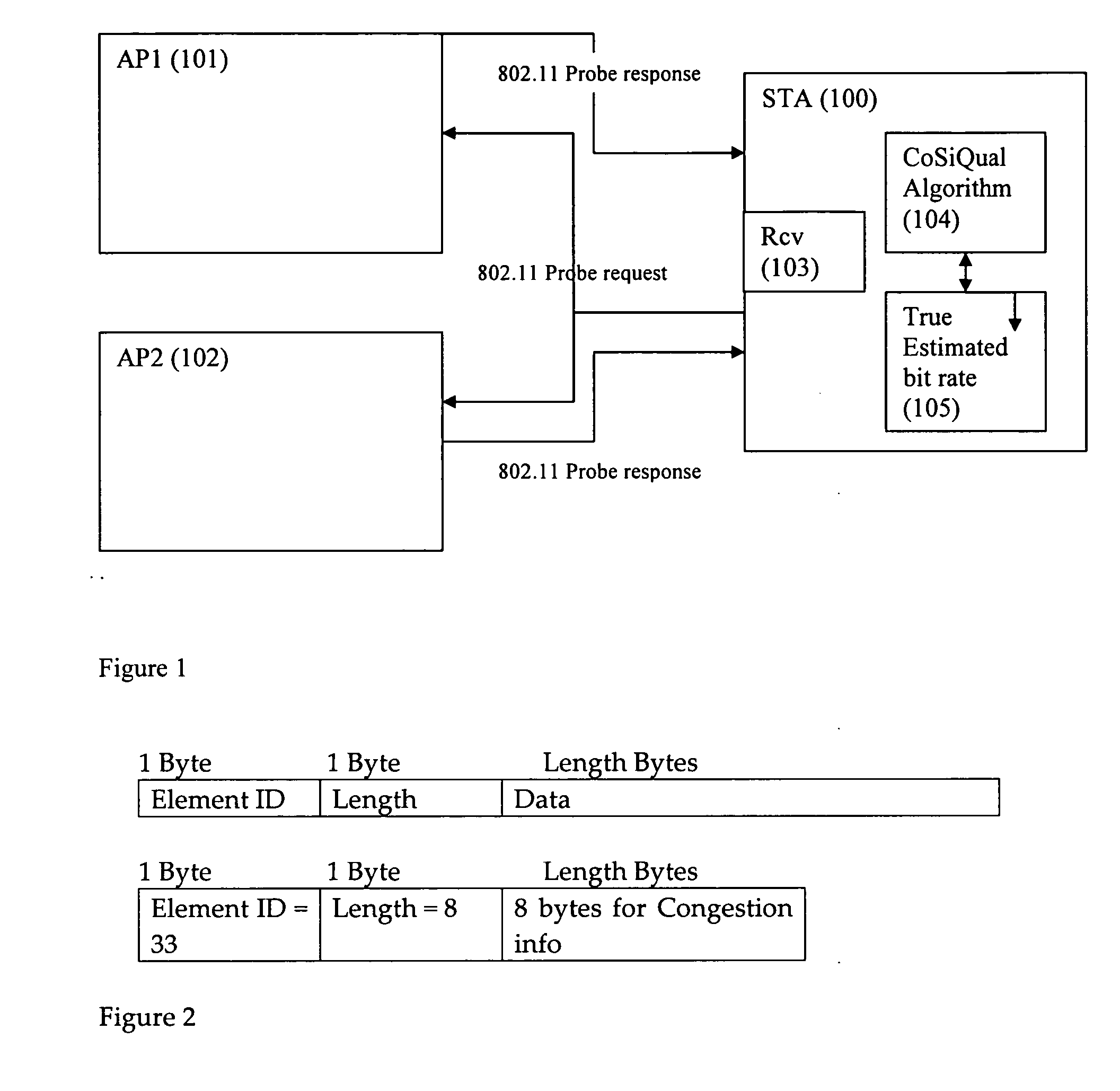Congestion level and signal quality based estimator for bit-rate and automated load balancing for wlans
- Summary
- Abstract
- Description
- Claims
- Application Information
AI Technical Summary
Benefits of technology
Problems solved by technology
Method used
Image
Examples
example
[0049] The technique described in detail above will now be described with respect to an example. In the example, it is assumed that in the embodiment of FIG. 1a STA 100 can choose between two available APs (AP 101 in 11 Mbits / s modulation mode and AP 102 in 5.5 Mbits / s modulation mode). Initially, the STA 100 scans the network by sending a probe request. Each AP receiving the probe request answers with a probe response containing the congestion information embedded in its probe response as described above. From signal quality associated with the probe responses, the STA 100 derives the possible maximum achievable bandwidths for each AP 101 and 102. For AP1 (101), the Max UDP Achievable bit rate value is 7.49 Mbits / s (Table 3) and the quality of the signal is determined to be good. For AP2, the Max UDP Achievable bit rate value is only 4.03 Mbits / s (Table 3) and the signal quality is determined to be average. Based on this data, conventional algorithms would pick AP 101 since congest...
PUM
 Login to View More
Login to View More Abstract
Description
Claims
Application Information
 Login to View More
Login to View More - R&D
- Intellectual Property
- Life Sciences
- Materials
- Tech Scout
- Unparalleled Data Quality
- Higher Quality Content
- 60% Fewer Hallucinations
Browse by: Latest US Patents, China's latest patents, Technical Efficacy Thesaurus, Application Domain, Technology Topic, Popular Technical Reports.
© 2025 PatSnap. All rights reserved.Legal|Privacy policy|Modern Slavery Act Transparency Statement|Sitemap|About US| Contact US: help@patsnap.com



